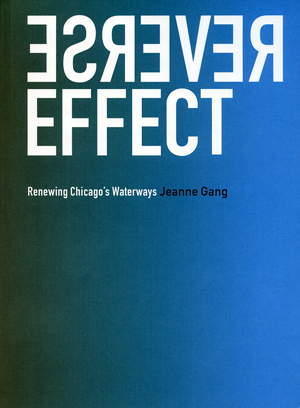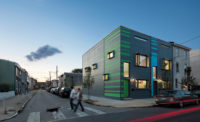
by Jeanne Gang. Chicago: Studio Gang Architects, 2011, 115 pages, $30
The reversal of the Chicago River has been celebrated as an engineering marvel for more than a century—evidence that modern civilization could use its might and know-how to fix anything—even reorder nature itself.
But the 19th century fix designed to stop Lake Michigan’s drinking water from being polluted by the filth, foul- and waste that was dumped into the river is causing innumerable environmental headaches in this millennium. Invasive species are spoiling the river. The lake’s water level doesn’t naturally recharge itself as quickly as it did when the river flowed normally. Perhaps the most damaging: using the freshwater river as a reversible sewer is just bad policy that ultimately harms the city and the region.
Now comes Reverse Effect: Renewing Chicago’s Waterways, a new book by Chicago architect and 2011 MacArthur fellow Jeanne Gang in a collaboration with the Natural Resources Defense Council. Gang is best known these days for Chicago’s dazzling Aqua Tower, a residential high-rise with an undulating façade. But she has been pondering the Chicago River for years—I moderated a panel in 2008 in which she suggested re-reversing the river—and the work of her firm Studio Gang Architects is informed by sustainable design practices.
The small book is packed with essays, intriguing case studies that show how the river and the surrounding system of waterways can be drastically improved. Gang also unleashes 11 architecture and landscape architecture students from the Harvard Graduate School of Design to develop visions on how the waterways, especially the Chicago River, can be converted into democratic, sustainable, public recreational spaces. The renderings are clear, colorful and well-done.
Reverse Effect does have major blindspots, however. It calls for a significant reimagining of the region’s sprawling system of rivers, canals, but does not calculate the cost or who should pay for it. The book doesn’t consider land ownership around the river. And I wish the book could have examined whether the existing agency in charge of the waterways—which had spent a decade fighting efforts to clean the river until recently—is up to the task.
Still, Reverse Effect stands well on its own. As the need for freshwater promises to become as acute in the 21st century as it was in the 19th, Gang’s book is certainly required reading


Post a comment to this article
Report Abusive Comment